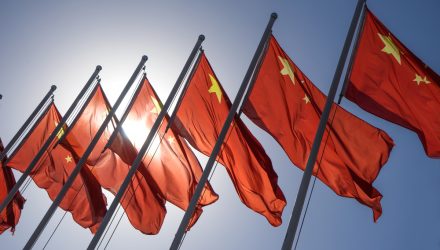China continues to push the boundaries on innovation. This is showing in metrics like the China Innovation Index, which measures the innovation capability for the second largest economy.
According to the National Bureau of Statistics (NBS), the China Innovation Index has been climbing year over year. Most recently, it hit “5.9 percent compared to the previous year to hit 155.7 in 2022,” according to a China Daily report.
China’s goal of self-reliance is certainly helping to push the innovation index higher. This is especially true when it comes to competing technologically with other nations. For example, the transition to heavier use of advanced tech like artificial intelligence (AI) is forcing China to manufacture its own chips as opposed to relying on other nations for these products.
“All sub-indices climbed in 2022, with the sub-index for innovation output rising 9.2 percent from a year earlier,” the China Daily report added. “A total of 798,000 invention patents were authorized in China in 2022, 2.2 times the number recorded in 2015, the NBS data revealed.”
This sets up an ideal opportunity for investors to capitalize on future growth by adding Chinese companies to their portfolios. Those focused on innovation are of particular importance in order to capture that growth opportunity.
“The emerging economy, which is spearheaded by new industries and businesses, has grown into a major driver for economic transformation and upgrading, and for energizing the economy,” said Li Yin, a statistician with the NBS.
A Fund of Funds Innovation Opportunity
Rather than seek to find individual stocks, investors can get an all-in-one solutions with the KraneShares China Innovation ETF (KGRO). With its active management, KGRO offers dynamic exposure that allows portfolio changes when market conditions warrant adjustments.
Furthermore, KGRO is essentially a fund of funds that offers exposure to various KraneShares ETF products:
- KraneShares CSI China Internet ETF (KWEB)
- KraneShares MSCI All China Health Care ETF (KURE)
- KraneShares MSCI China Clean Technology ETF (KGRN)
- KraneShares CICC China 5G & Semiconductor ETF (KFVG)
- KraneShares SSE STAR Market 50 Index ETF (KSTR)
If investors want more targeted exposure to these individual funds, they can solely allocate investment capital into each fund as a separate position. As of October 24, the fund is heavily focused on KWEB, comprising just over 30% of the fund’s assets, while KURE comes in second at about 26% of the fund.
The focus on KWEB highlights the strength of technology right now, especially with the focus on AI. Likewise, AI is permeating sectors like the healthcare industry, which warrants exposure to KURE.
For more news, information, and analysis, visit the China Insights Channel.

